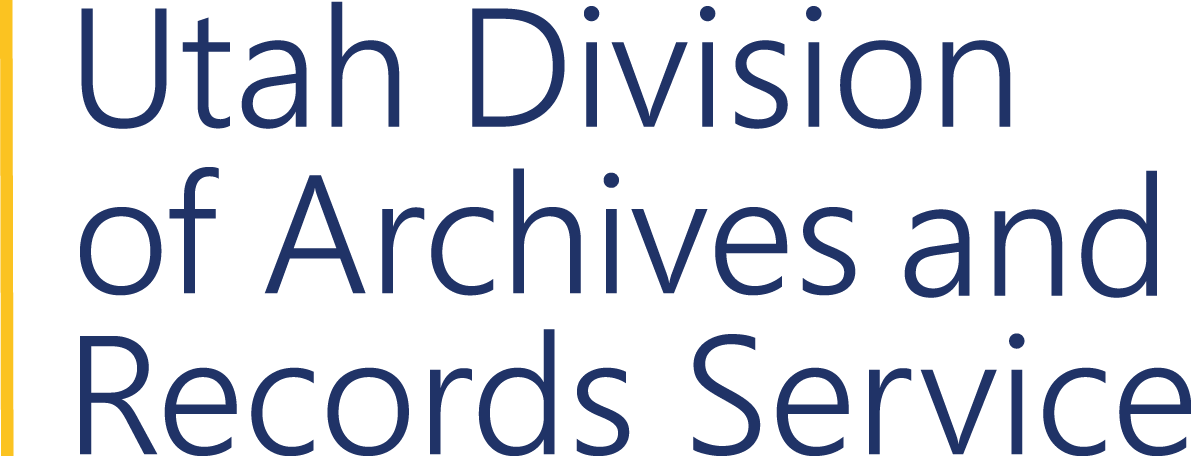BLUE MOUNTAIN MINING DISTRICT (UTAH). RECORDER
Agency History #3124
CREATION
The floods of prospectors who searched for gold along the Colorado and San Juan Rivers in the 1890s also explored the Blue Mountain area near Monticello. Blue Mountain speculators organized the Blue Mountain District on 9 December 1892. At their first meeting they established boundaries twenty square miles, which included "the Government Monument on . . . South Peak in the Blue Mountains," and adopted by-laws for the district (San Juan County (Utah). County Recorder, Miscellaneous records, Book B, p. 240-245, Utah State Archives, Series 23400). This was done in accordance with federal law which stated that mineral deposits in the public domain were free and open to exploration, and locators of the same had exclusive right of possession inasmuch as they complied with federal law and the regulations of local mining districts. (Statutes at Large, Treaties, and Proclamations, of the United States of America, 1872, vol. XVII, chap. 152). Miners organized local districts to manage mining activity and record claims. Until 1897, when the Utah Legislature enacted a mining law transferring record keeping responsibility to county recorders, (Laws of Utah, 1897, chapter 36, "Mining Claims.") mining district recorders kept official records of mining claims.
FUNCTIONS
Nineteenth century mining districts served two primary functions. They established rules and regulations based on federal law and adapted to local needs, and they selected a recorder to keep official records concerning each claim. At the time of organization, Blue Mountain prospectors established guidelines for making both placer and lode claims and for the annual assessment labor required to maintain and perfect those claims. Whereas prospectors along San Juan County rivers panned for gold on placer claims, mountain miners primarily staked lode claims. Blue Mountain miners created the special requirement that each new lode locator sink a discovery shaft at least 10 feet into the earth or to make an open cut in the earth of at least 10 feet within 60 days after location. According to district by-laws all claimants were required to file a notice of location within 90 days of discovery.
In September 1894 Blue Mountain miners met at Monticello to revise the by-laws. The revisions more specifically defined the way claims should be marked at each corner with substantial stakes or monuments of stone and with posted signs bearing identification information. The new by-laws more specifically identified information required to be recorded in the notice of location, and also more specifically regulated assessment labor, which by federal law was to be $100 annually. Blue Mountain miners specified that one day of labor was to be counted as $5. In case placer claim holders held claims smaller than the law allowed, they could maintain the claim with proportionately less assessment labor. With their revisions, Blue Mountain miners established guidelines for relocating old claims or reclaiming abandoned claims. They reduced the time allowed for sinking the discovery shaft to 30 days and the time allowed for recording to 60 days.
ADMINISTRATION
Miners at the organizational meeting elected A.L.F. MacDermott as district recorder for a two year term. They charged him and an assistant with responsibility for procuring books and stationery for keeping mining district records; with obtaining a copy of federal mining law; and with seeing that the by-laws were recorded by the San Juan County recorder as required by law (Compiled Laws of Utah, 1876, Chapter 10). The miners also elected a permanent president and secretary to officiate at annual meetings which would be held for the purpose of electing mining district officers.
In 1897 the Utah Legislature enacted a mining law which transferred responsibility for recording location notices and other mining documents to county recorders (Laws of Utah, 1897, chapter 36, "Mining Claims"). All books previously kept by district recorders were to be deposited in the office of the county recorder.
| MINING DISTRICT RECORDER | |
| A.L.F. MacDermott | 1892-1897 |
COMPILED BY: Rosemary Cundiff, January 2002
SOURCES
Blue Mountain Mining District (Utah). Recorder, Mining Records, Utah State Archives (series 24035).Compiled Laws of Utah, 1876, Chapter 10 Laws of Utah, 1897, Chapter 36, "Mining Claims," Utah State Archives (series 83155).McPherson, Robert S. A History of San Juan County: in the Palms of Time. Utah Historical Society, 1995) San Juan County (Utah). County Recorder, Miscellaneous records, Book B, pages 172-175, 240-245) Utah State Archives (Series 23400) Statutes at Large, Treaties, and Proclamations, of the United States of America, 1872, vol. XVII, chap. 152. Published by authority of Congress, Boston: Brown, Little and Company
Page Last Updated July 2, 2003.
